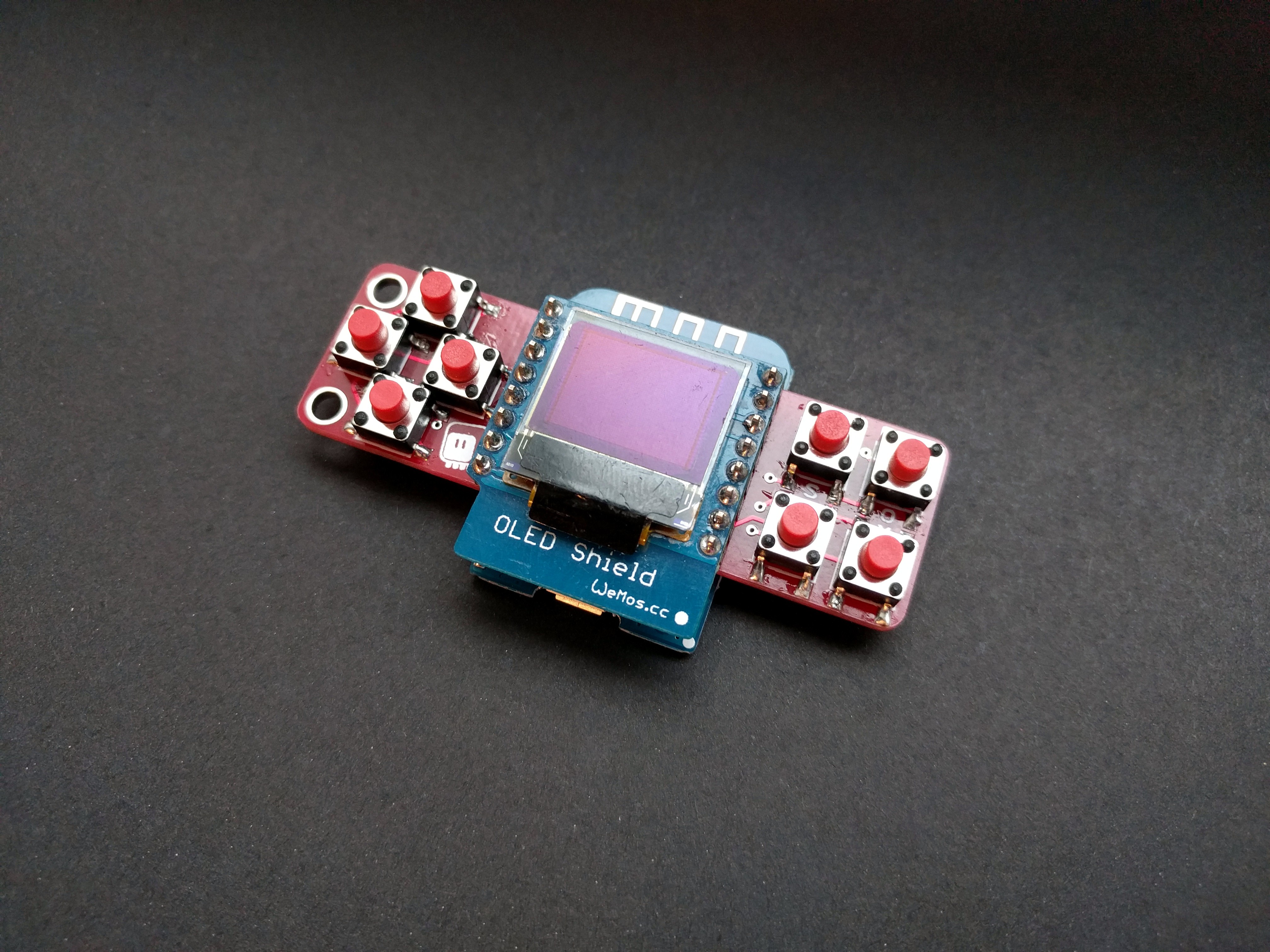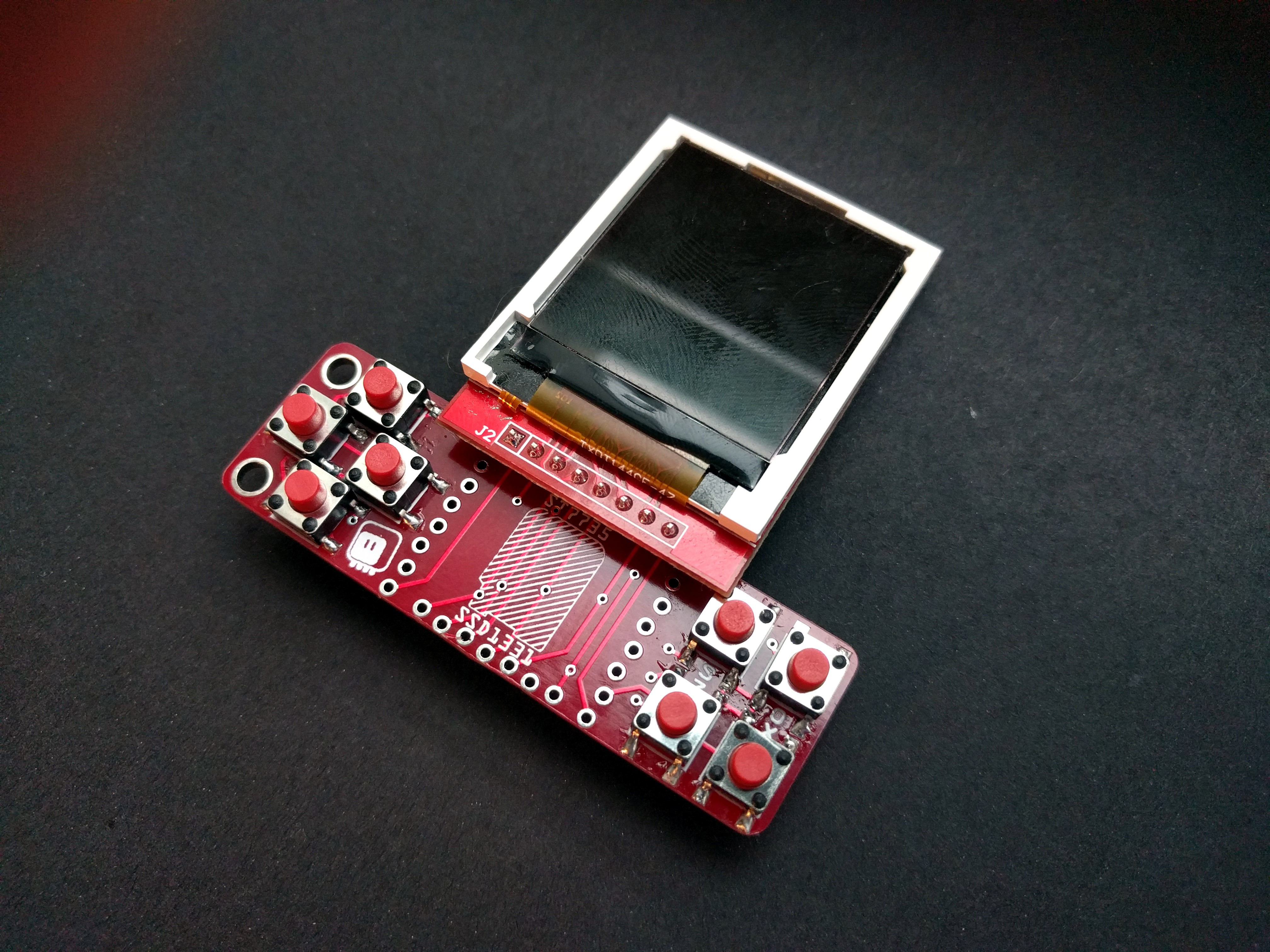Version 6.0¶
Published on 2018-05-17 in D1 Mini X-Pad Shield.
After using an ATtiny24 for handling buttons in Micro:Boy I decided that this is also the way to go with the X-Pad shield. I designed version 5.0 which used the same buttons and layout as 4.0, but a different chip, and I tested the firmware with it. Turns out that it works very well, and does de-bouncing and buffering for you, so that you don’t have to poll the chip frantically for presses, afraid that you miss any. All button presses now wait nicely in the buffer until you read them. The shield looked like this:

But then I have some problems with the shields I sold on Tindie (due to poor solder joints on the buttons), and I removed the shield from my store. I decided to work on the design a little bit more and make a version that will really be the best I can make. Behold, version 6.0:

It’s bigger than the original X-Pad shield, and has mounting holes. It also has all the components, except buttons, on the back, and away from the middle part of the board — so it can lie flat against the D1 Mini and other shields. It also has friction-fit headers, so no soldering is necessary and you can add it to another shield easily, like this:

There are also two headers for popular display modules. One for the 128×128 ST7735R module (you might need to trim that corner):

And one for the popular SPI-based OLED modules, such as SSD1331 or SSD1306:

I still need to add some last finishing touches to the firmware and test it all properly, and it’s going into my Tindie store.
 deshipu.art
deshipu.art